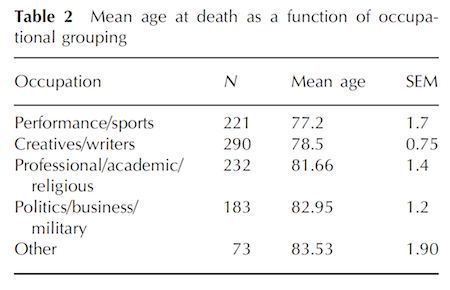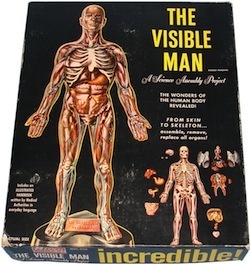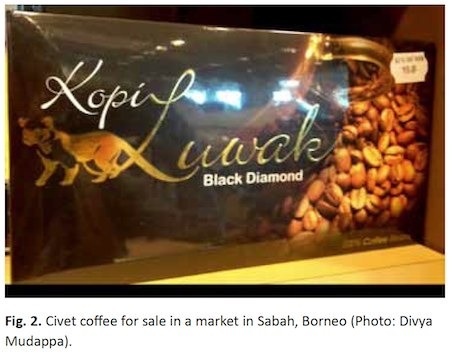Marc Abrahams's Blog, page 498
April 21, 2013
Caring for and killing small mammals (University of Florida advice)
The grand circle of life is on display at the University of Florida Small Animal Hospital. The institution reports that it
“
… offers the highest quality diagnostic and treatment care for all non-domestic animals, including Florida indigenous wildlife and non-native exotic animals.“
“Our service has exceptional experience and unparalleled facilities for non-domestic mammal medicine. We provide a quiet low stress environment away from cats and dogs for ‘pocket pets’ such as pet rabbits, hamsters and guinea pigs.“
Complementing (or alternatively, contrasting with) the above, the University of Florida also provides advice on How to Use Traps to Catch Nuisance Wildlife in Your Yard. Their illustrated guide includes info on how to use :
• Pincher traps and
• Conibear traps, [BONUS: Frank Ralph Conibear, inventor of the trap that bears his name]
- all of which are designated as ‘lethal’, and can (as appropriate) be used to kill beavers, gophers, mice, rats and voles etc..
Some Florida regulations :
[1] The use of conibear traps in Florida is illegal without a permit.
[2] “Any mammal (other than white-tailed deer, black bear, or bats) can be taken on your personal property if it is causing property damage.” (there are special exemptions for bobcats - go here)


April 20, 2013
Inbreeding, the Habsburgs, and Texas
Ewen Calloway, in Nature magazine, writes:
Inbred royals show traces of natural selection
A provocative analysis now suggests that the Habsburg royal family [some of whom are pictured here — click on the image to go to the Habsburg-laden web site whence come these images] might have evolved under natural selection over three centuries to blunt the worst effects of inbreeding. Evolutionary theory predicts such a ‘purging’ process, and researchers have documented the effect in animals and plants. But evidence among humans is scant — in part because of the dearth of data on inbred families spanning many generations…. Leonid Kruglyak, a population geneticist at Princeton University in New Jersey, is not convinced that natural selection is behind the changes in mortality. He says that the results are more likely to be a statistical fluke caused by small sample sizes.
The new study is:
“Royal dynasties as human inbreeding laboratories: the Habsburgs,” Gonzalo Alvarez, Francisco C. Ceballos, Heredity, epub April 10, 2013.
The team published an earlier study:
“The Role of Inbreeding in the Extinction of a European Royal Dynasty,” Gonzalo Alvarez, Francisco C. Ceballos, Celsa Quinteiro, PLoS ONE 4(4): 2009, e5174.
Others, too, have written about the Habsburgs and their potential value to scientists. In 2004, the Improbable Research newspaper column looked at one such effort:
Researchers in one field do not always pick up on good suggestions from those outside their speciality. Take, for example, the case of the Hapsburg lip.
“I do not propose to deal with one of the most famous inherited features, the ‘Hapsburg lip’ … because it could almost be described as a medical condition, about which I am not qualified to speak. However, I feel sure that the ‘Hanoverian eye‘, the ‘Coburg nose‘ and the ‘Danish neck’ will prove equally fascinating”.
So said Frances Dimond, curator of the Royal Photographic Collection, in a lecture that that was published in 1994 in the Genealogists’ Magazine….
A neurologist of my acquaintance recently moved to east Texas, where he discovered a most unexpected source of research material. He reports that, thanks to many generations of inbreeding, the region is full of genetically based neurological phenomena that he had previously seen only in medical books. What he had thought to be rare curiosities turn out to be commonplace in Texas.
The royal families of Europe and the hoi polloi of east Texas are both there, quietly waiting for scientists to study and make sense of them.
(HT Jennifer Ouellette)

If you want to smell like the Grand Canyon
If you want to spray yourself with a mist that might make you smell like part or all of the Grand Canyon, you can try using one of the products manufactured by Air Wick. The company advertises the products with this invitation (and also with videos):
America’s national parks are a source of inspiration to all of us. That’s why Air Wick® is proud to partner with the National Park Foundation in an effort to preserve and protect the very essence behind our new expertly crafted National Park Collection of fragrances. From the breathtaking majesty of the Grand Canyon to the sun drenched valleys of Denali to the lush paradise of American Samoa, we hope these fragrances inspire you as much as they have inspired us.
(Thanks to investigator Darren Garnick for informing us about this, in his essay “Does Your Bathroom Smell Like the Grand Canyon?”
BONUS: Earle Spamer’s “This Grand Canyon, and That One, and Those Others…“

Famous, Fast Approach to Death: Obits in NYT
Some people achieve fame, then live so long that the fame fades and their eventual death goes largely unremarked upon. Those people are not the subjects of this new study:
“Death in The New York Times: the price of fame is a faster flame,” C.R. Epstein and R.J. Epstein, QJM, epub 2013. (Thanks to kiltish nvestigator Erwin Kompanje for bringing this to our attention.) The authors, at the University of Queensland and St Vincent’s Hospital in Sydney, Australia, report:
Aim: Based on the premiss that an obituary in The New York Times (NYT) tends to imply success in one’s vocation, we used NYT obituary data to elucidate the relationships between career success, terminal disease frequency and longevity.
Design: One thousand consecutive obituaries published in NYT over the period 2009–11 were analysed in terms of gender, occupation and terminal disease, as attributed.
Methods: The frequency of disease for each occupational category was determined, and the mean age of death was calculated for each disease and occupational subgroup.
Results: … ‘Old age’ was more often the cited cause of death for philanthropists, academics and doctors, and less often for sportsmen, performers and creatives. Cancer deaths occurred most often in performers and creatives, with lung cancer commonest among performers and least common in professionals.
Conclusion: Fame and achievement in performance-related careers may be earned at the cost of a shorter life expectancy. In such careers, smoking and other risk behaviours may be either causes or effects of success and/or early death.
Some detail from the study:


Children’s book to come: “Anolis Annectens, The Retrograde Anole”
Children’s books, by tradition, have the best titles. This title, on a blog post, begs us to beg its author (Jonathan Losos) to write an entire children’s book on the topic:
Anolis Annectens, The Retrograde Anole
(Thanks to @BoraZ for bringing this title to our attention.)

April 19, 2013
Reproduction: Some parts are optional
 Lisa Hix, in Collectors Weekly, muses about old science toys for children (HT Mo Costandi). Among them are a romantic-only-in-a-vaguely-scientific way:
Lisa Hix, in Collectors Weekly, muses about old science toys for children (HT Mo Costandi). Among them are a romantic-only-in-a-vaguely-scientific way:
Visible Man and Woman made quite a pair. Visible Man, like his less transparent brethren, the Ken doll, lacked external genitalia. Visible Woman, on the other hand, was quite sexy on the Renwal box, with perky breasts and her eyebrow coyly arched. Still, her uterus was completely optional. The copy on the box did quite a bit of linguistic gymnastics to avoid and apologize for any connection to sex; in the ’50s, it was still verboten to let children know exactly how babies are made. It reads, “Optional Feature: The Miracle of Creation. Understanding female biology requires observation of these parts relating to gestation. Included therefore is a separate group of components representing this phenomenon. Assembly is optional; the model can be completed without incorporating these elements.”

Demand for Luak Coffee Drives Demand for the Animal that Excretes It
Luak coffee — coffee made from beans eaten and excreted by the luak (an animal also known as the palm civet) — is becoming more popular, something that’s been happening at least since 1995, the year the foodstuff was the subject of an Ig Nobel Prize. The popularity is increasing demand for the animal, which is a big problem, says this recent study:
“Observations of small carnivores in Jakarta wildlife markets, Indonesia, with notes on trade in Javan Ferret Badger Melogale orientalis and on the increasing demand for Common Palm Civet Paradoxurus hermaphroditus for civet coffee production,” Chris R. Shepherd, Small Carnivore Conservation, vol. 47, December 2012, pp. 38–41. The author, at TRAFFIC Southeast Asia, Selangor, Malaysia, writes:
“Six species of small carnivores were recorded during spot checks carried out in wildlife markets in Jakarta, Java, Indonesia, in 2010 and 2012, including Javan Ferret Badger Melogale orientalis, a little-known species rarely observed in trade. Most numerous was Common Palm Civet Paradoxurus hermaphroditus,which is increasingly being taken from the wild for the production of kopi luwak (‘civet coffee’).”
Here’s detail from the study:
BONUS: Mongabay.com gives their view on the matter.

April 18, 2013
The quest for the most spherical bubble
This study tells of progress in the quest for the most spherical bubble:
“The quest for the most spherical bubble: experimental setup and data overview,” Danail Obreschkow, Marc Tinguely, Nicolas Dorsaz, Philippe Kobel, Aurele de Bosset, Mohamed Farhat, Experiments in Fluids, April 2013, 54:1503. (Thanks to investigator Tom Gill for bringing this to our attention.) The authors, at the University of Western Australia, Laboratoire des Machines Hydrauliques in Lausanne, Switzerland, and the University of Cambridge, UK, report:
“We describe a recently realized experiment producing the most spherical cavitation bubbles today. The bubbles grow inside a liquid from a point plasma generated by a nanosecond laser pulse. Unlike in previous studies, the laser is focussed by a parabolic mirror, resulting in a plasma of unprecedented symmetry. “
BONUS: “Pearls And The Puzzle of How They Form Perfect Spheres“, in the arXiv blog, about this study:
“Pearls Are Self-Organized Natural Ratchets,” Julyan H. E. Cartwright, Antonio G. Checa, Marthe Rousseau, arXiv:1304.3704v1, April 12, 2013. The authors, at the Universidad de Granada, Spain, report: “Pearls, the most flawless and highly prized of them, are perhaps the most perfectly spherical macroscopic bodies in the biological world. How are they so round? Why are other pearls solids of revolution (off-round, drop, ringed), and yet others have no symmetry (baroque)? We find that with a spherical pearl the growth fronts of nacre are spirals and target patterns distributed across its surface, and this is true for a baroque pearl, too, but that in pearls with rotational symmetry spirals and target patterns are found only in the vicinity of the poles; elsewhere the growth fronts are arrayed in ratchet fashion around the equator. We demonstrate that pearl rotation is a self-organized phenomenon caused and sustained by physical forces from the growth fronts, and that rotating pearls are a – perhaps unique – example of a natural ratchet.”

April 17, 2013
Disgusting Slime [update & erratum]
An Improbable note for August 19th, 2011 was related to Exploring disgust-related tactile processes. At the time, we had not been able to discover the exact nature of the ‘disgusting’ material used in the experiment. We are now in a position to reveal the recipe for the disgusting dough-like substance – thanks to a full copy of the paper now posted at (co-author) Professor Debra Lieberman’s website.
“The dough mixture was made using 2 cups of flour, 2 cups of water, 1 cup of salt, and 1 tablespoon of cream of tartar, yielding a consistency similar to Play-Doh. Each dough stimulus was formed into a fist-sized ball.”
Erratum : In the original article we mistakenly asserted that the non-disgusting control material was a powder. It was in fact cotton rope.
Experimental subjects rated the materials in four categories:
• ‘How disgusting’
• ‘How disgusting to put in mouth’
• ‘How willing to touch again’
• ‘How appealing’
The authors note that new recipes may be required for future studies :
“Additional studies might select more mucoid, slimy and viscous textures textures rated as highly disgusting to examine the range of tactile properties associated with the disgust response”
We will of course endeavour to publish the new recipes as/when/should/if they become available.

Killer Whales – the tax implications of
As our informed readerbase will know, Killer whales (Orcinus orca ) are not fish. What then are the tax implications for ‘owners’ of killer whales – given that US tax law has specific regulations which differ considerably according to whether one owns a killer whale (a mammal), or a large fish, say a Great White shark (Carcharodon carcharias).
The position is clarified in this short video, where Professor Jeff H. Karlin, JD, LLM, from Golden Gate University, US, outlines the character of a Killer whale for tax porpoises:

Marc Abrahams's Blog
- Marc Abrahams's profile
- 14 followers







